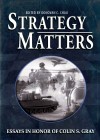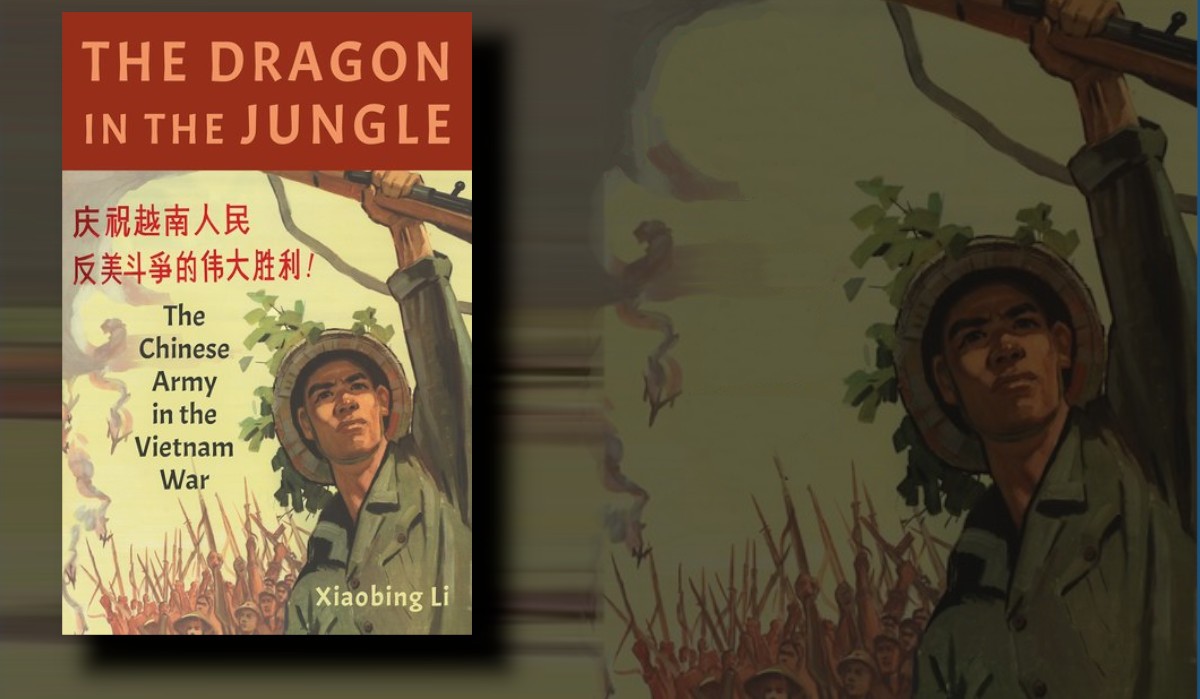Essays in Honor of Colin S Gray
Air University Press, 2022, 233 pp
ISBN: 9781585663217
Written By: Donovan C Chau
Reviewed By: Gabrielle Taylor
There is one name more synonymous with the modern study of strategy – Colin Gray. Indeed, he was one of his generation's most influential strategic thinkers who profoundly affected how scholars and practitioners understand war, strategy, and military education. Strategy Matters: Essays in Honor of Colin S Gray, edited by Donovan C Chau, is both a tribute to Gray’s contribution and a continuation of the intellectual discourse he fostered throughout his career. This book is a collection of essays written by his former students, and explores Gray’s thinking on strategic education, history, culture, and the future of strategic thought. Strategy Matters demonstrates the reach of Gray’s influence in shaping the intellectual landscape of modern strategic studies and is a fitting celebration of his legacy.
Strategy Matters honours Gray’s work by demonstrating how his ideas have influenced a generation of strategists. The book does not seek to offer a unified theory of strategy but rather illustrates how Gray’s intellectual curiosity and methodologies continue to shape discussions on strategic issues and how the discipline is taught and studied. Using Gray’s work as a foundation, the authors examine how his principles can be applied to new security challenges, reaffirming the timelessness of his ideas. Gray’s enduring lesson is that strategy is an ongoing intellectual pursuit rather than a static discipline.
The book is divided into three parts, each addressing a different aspect of strategic thought. Part One ‘Strategy, Education, and History’, explores Gray’s impact on professional military education (PME) and the use of historical strategic analysis. The book’s opening chapter, ‘Educating Strategists: Colin Gray and the School of Advanced Air and Space Studies’ by James D Kiras, highlights the tension between PME and broader strategic education, emphasising the importance of creative and critical thinking. Using Kiras’ experience at the United States School of Advanced Air and Space Studies (SAASS) as an example, this chapter examines how Gray’s influence has shaped many advanced military institutions' academic and methodological foundations. Historical case studies are a continuing device used throughout the book to examine the enduring principles of strategy. Chapter two traverses the North African campaign in World War Two, and chapter three overlays British military strategy from the Peninsular War to the Cold War. This journey through time emphasises the importance of a thorough understanding of history to devise informed strategic policies.
Part Two ‘Strategy and Culture’ considers the relationship between national experience, technological innovation and strategic perspective. Chapters in this part explore the conscious and sub-conscious influence of identity and culture on national approaches to strategy, using the evolution of the United States as a case study. The arguments presented in the chapters chronologically follow, beginning with the expansion of the frontier and the role of technology in the ability to ‘go West.’ Brice Franklin Harris establishes the context for this part with chapter four, ‘The Origins of Defence Innovation: Cultural Roots of the American Strategic Experience’. Here, he explains the causal links between the establishment of a college-centric education system and the resulting industry-based economy reinforced the belief in innovation and technology as the remedy to strategic challenges. This part concludes with a chapter discussing the continuing tension between the US and Russia and how the US’s preference for technologically innovative solutions has advanced cyber capability as a means of power projection. Part two ‘Strategy and Culture’ effectively draws together examples from across US history to demonstrate the permanence of strategic culture.
Part Three, ‘Strategy, Strategists and the Future’ tackles the role of time – literal and perceived - and human characteristics in strategy. This section points out differences in temporal perception across strategy, from the paradox of studying history to understand and shape the future, to the differing effects of time in each domain. The discussion on time then intersects with character, citing examples from the Napoleonic Wars and World War Two to correlate the will of political leadership with the duration and intensity of conflict. These discussions underscore the critical attributes of patience and foresight in strategic decision-making.
Strategy Matters reinforces the wisdom of Colin Gray’s work. The diversity of topics – from modern-historical case studies to contemporary cyber warfare – demonstrate how Gray’s ideas continue to inform strategic thinking across time, domain, and context. The book is particularly valuable for students of strategy, whether new to the field or professionally experienced. It serves as both an introduction to strategy and a springboard for further study, offering readers a solid start-point for engaging with Gray’s work. The book successfully bridges academic theory with practical application, rendering it useful for military professionals and policymakers alike.
While the book succeeds in celebrating Gray’s legacy, its structure and variety of writing styles may feel somewhat disjointed. Understanding the chapters are written by different authors and vary in style and depth, it is very much a collection of reflections rather than a cohesive exploration of Gray’s strategic thought. Some chapters and authors assume prior knowledge of Gray`s key theories making it less accessible to a general audience. A brief introduction to these teachings at the beginning of the book would have improved its accessibility for a broader readership.
Strategy Matters is a fitting tribute to Colin Gray, reinforcing his position as a foundational figure in strategic studies. For students of strategy, this book provides both a retrospective of Gray’s influence and a forward-looking exploration of contemporary strategic challenges. Those with knowledge of Gray’s work will find valuable commentary and extensions of his work. Similarly, newcomers or those with an in-depth understanding of the discussion topics will be encouraged to seek out his original texts to deepen their understanding. While the book does not serve as a standalone introduction to Gray’s work, it effectively underscores why strategy matters—and why Gray’s contribution will continue to influence strategic thought for years to come.



